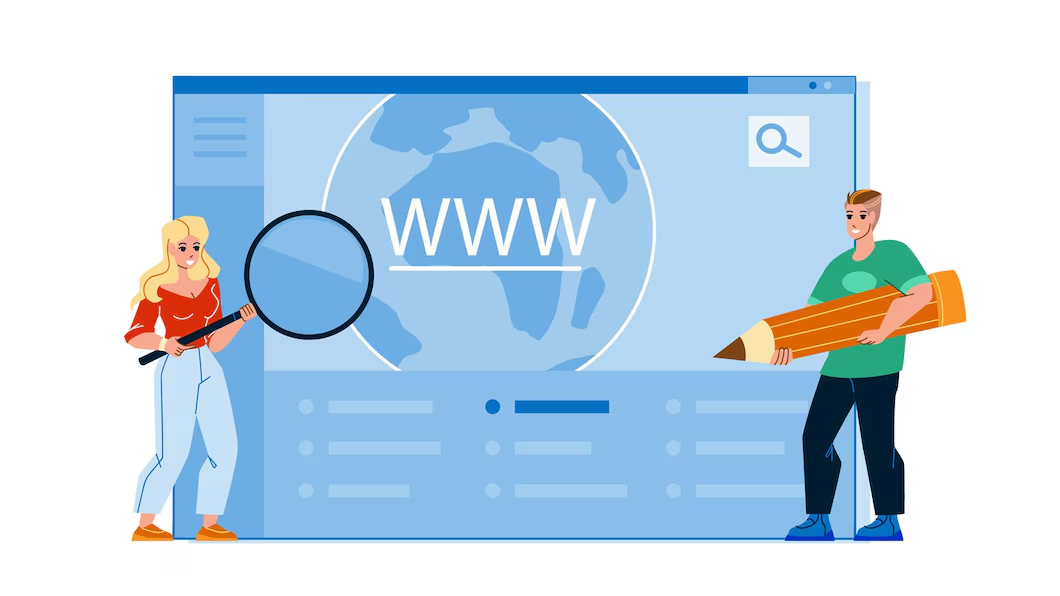SOFTWARE & AI
Managing Complexity: The Benefits of a Unified Platform for IT Teams

In today’s technology-driven world, IT teams face increasingly complex challenges. From managing disparate systems to ensuring robust cybersecurity protocols, the demands on IT departments can be overwhelming. This complexity often results in inefficiencies, miscommunication, and increased operational risks. A unified platform can significantly alleviate these burdens, providing a centralized solution that streamlines processes and enhances collaboration. By consolidating tools and resources, IT teams can focus more on innovation rather than routine maintenance. In this article, we will explore the numerous benefits of adopting a unified platform for IT teams and how it helps navigate the complexities of modern IT environments.

Streamlined Communication
Effective communication is at the heart of any successful IT operation. A unified platform enhances communication among team members, fostering collaboration. With integrated tools such as chat applications, video conferencing, and project management software, the need to switch between various applications is minimized. This seamless integration means that teams can communicate in real-time without the distraction of hopping between different interfaces. By utilizing a consolidated solution like GTT’s website, IT teams can share information rapidly and respond to issues more effectively. This cohesive approach not only accelerates project timelines but also reduces the potential for miscommunication. Furthermore, standardized communication channels allow for better documentation of conversations and decisions, ensuring accountability.
Enhanced Collaboration
Collaboration is crucial for IT teams, particularly when tackling complex projects that require input from various experts. A unified platform provides shared workspaces where team members can collaborate on documents and projects in real time. This immediate access to shared resources promotes synergy and enhances the team’s ability to innovate. Features such as task assignments and tracking can streamline workflow management. As teams work together more effectively, they can foster creativity and generate solutions more quickly. Enhanced collaboration translates to a collective problem-solving approach, which is essential when facing intricate challenges. Regular feedback loops and brainstorming sessions become simpler, paving the way for innovative solutions that might otherwise remain unrecognized.
Increased Efficiency
Time is a valuable asset in the world of IT, and any opportunity to increase efficiency should be embraced. By utilizing a unified platform, IT teams can reduce redundancies that slow down operations. For instance, repetitive tasks can be automated, allowing staff to dedicate more time to strategic initiatives. The integration of various IT functions into a single platform results in less time spent on administrative tasks. Real-time monitoring tools give managers the ability to identify areas of improvement and streamline processes effectively. Enhanced analytics capabilities make performance tracking more straightforward, enabling teams to pivot strategies as necessary. Increased efficiency empowers IT departments to deliver projects on time while maintaining a high standard of quality. This efficiency not only benefits the internal team dynamics but also enhances service delivery to end-users.
Improved Security
Cybersecurity remains a significant concern for IT teams, as breaches can result in severe consequences. A unified platform often comes equipped with advanced security measures, ensuring that sensitive data remains protected. With a centralized approach to managing IT assets, monitoring potential risks becomes more straightforward. This consolidated visibility allows for quicker identification of vulnerabilities and the implementation of corrective measures. Moreover, a unified platform can enforce consistent security policies across all systems, reducing the likelihood of human error. Regular updates and patches can also be handled more efficiently, ensuring that all systems are fortified against emerging threats. By prioritizing strong security frameworks within a unified platform, IT teams can instill confidence in their stakeholders and safeguard organizational assets.
Cost Savings
Implementing a unified platform can lead to substantial cost savings for organizations. By reducing the number of disparate systems and tools required for daily operations, businesses can minimize software licensing costs. Consolidation not only helps to lower overhead but also reduces the training burden on staff as they navigate fewer applications. Increased efficiency and streamlined workflows ultimately lead to higher productivity, translating into a better return on investment. Additionally, a unified platform can enhance customer satisfaction, resulting in increased sales and revenue. Reducing the complexity of IT operations allows for more effective resource allocation and strategic planning. These cost benefits can empower organizations to invest more in innovation and growth rather than allocating a budget to managing multiple tools.
Scalability and Flexibility
Finally, a unified platform offers scalability which is crucial for organizations aiming for growth. As businesses evolve, their IT needs change. A unified platform can adapt to these needs, allowing organizations to scale operations without significant disruptions. Implementing new features or expanding user access can be accomplished quickly and efficiently. Additionally, this flexibility ensures that IT teams can respond to emerging technological trends and market demands. As a result, organizations can remain competitive in their respective industries. The ability to swiftly adjust functionalities according to project requirements or business objectives strengthens the overall resilience of the IT department.

In summary, adopting a unified platform brings significant advantages to IT teams navigating complex environments. Effective communication, enhanced collaboration, increased efficiency, improved security, cost savings, and scalability are all notable benefits. By consolidating tools and resources, organizations can position themselves for success, while their IT departments can focus on strategic innovation. Embracing a unified approach fosters a proactive environment that empowers teams to tackle challenges head-on and drive continuous improvement.
SOFTWARE & AI
Exploring “techdae.frl”: A Comprehensive Guide

The online world is constantly evolving, and with it, domain extensions continue to diversify. Among the new and emerging domain names, “techdae.frl” stands out as a unique option for businesses, startups, and entrepreneurs in the tech space. This article explores the “techdae.frl” domain extension, its potential applications, and how it can benefit your business or project. Whether you’re a seasoned developer, a startup founder, or just someone curious about domain names, this comprehensive guide will provide valuable insights into why “techdae.frl” might be the right choice for your online presence.
What is the “techdae.frl” Domain?
The “techdae.frl” domain is part of the “.frl” top-level domain (TLD), a relatively new extension designed for specific markets or regions. The “.frl” TLD, primarily associated with Friesland in the Netherlands, is gaining popularity due to its flexibility and relevance for various industries, particularly in the tech field.
“Techdae” as a second-level domain brings together two components — “tech,” which represents technology, and “dae,” which could be interpreted as an abbreviation for “data” or “digital applications in engineering,” among other meanings. This combination creates a memorable and relevant domain name for businesses, blogs, and websites that are heavily involved in the tech world.
Why Choose “techdae.frl”?
Choosing a domain name is one of the most crucial steps in establishing an online identity. While traditional domain extensions like “.com” and “.net” are widely known, new TLDs such as “.frl” offer several distinct advantages. Here are some reasons why “techdae.frl” could be an excellent choice for your online presence:
Unique Branding Opportunity
The “techdae.frl” domain provides an excellent opportunity to create a unique and niche brand. The combination of “tech” with the regional focus of “.frl” makes it an ideal option for tech-related businesses and startups that want to stand out. If your company specializes in technology, digital services, or data-driven solutions, “techdae.frl” offers a clear and relevant brand identity.
The unique TLD helps businesses create a more memorable online presence by allowing you to align your domain name directly with your niche. This is especially beneficial in an overcrowded digital space, where finding a distinctive domain name under the more traditional extensions can be challenging.
Increased Visibility in the Tech Industry
Using a domain like “techdae.frl” could improve visibility for businesses in the tech industry. The “tech” component in the domain name immediately signals to visitors that the website is related to technology. This can be helpful for SEO, especially if you’re targeting tech-savvy customers or looking to position your site as a resource for tech-related content, news, products, or services.
Additionally, the “.frl” TLD has its own unique identity, which can enhance your visibility among users familiar with this extension. This is especially beneficial if you’re targeting the Netherlands or regions in and around Friesland, where the “.frl” extension is most recognized.
Availability of Desired Domain Names
As more businesses and individuals establish their online presence, it becomes increasingly difficult to find short, memorable domain names under popular TLDs like “.com.” However, new TLDs like “.frl” provide more opportunities for businesses to secure domain names that align perfectly with their brand identity. With “techdae.frl,” businesses can create a short, catchy domain name without worrying about availability issues.
The availability of desired domain names makes it easier for businesses to secure a URL that fits their brand, messaging, and target audience, which is an essential aspect of effective online branding.
Affordable and Accessible
Compared to traditional TLDs like “.com” or “.org,” newer domain extensions like “.frl” are often more affordable and accessible. This means that businesses with limited budgets can still secure a high-quality domain name that fits their business identity. The cost-effectiveness of using “techdae.frl” could be particularly beneficial for startups and smaller businesses that are just beginning to build their online presence.
Regional Appeal and Relevance
The “.frl” extension is inherently tied to Friesland, a region in the Netherlands known for its distinct language and culture. For businesses based in Friesland or targeting Dutch-speaking communities, using “techdae.frl” can provide a sense of local connection and authenticity. Even if your business is global, using a regional TLD can help attract attention from local customers who value regional identity and authenticity in online brands.
How to Use “techdae.frl” for Your Business
Establishing Your Online Presence
Whether you’re launching a new startup or establishing an online presence for your existing business, a well-chosen domain name is one of the first steps in your digital marketing strategy. For businesses in the tech industry, using a domain like “techdae.frl” can help establish a strong identity and make your site easy to remember for users who are interested in technology-related content.
If you are a tech company, you can use the domain for a variety of purposes:
Business Website: Create a professional site that showcases your products or services, portfolio, and company values.
E-commerce Store: Sell tech products, software, or digital services directly from your site.
Tech Blog: Share insights, news, and trends in the tech industry, or offer tutorials and educational content.
Tech Consultancy: If you provide tech consulting services, the “techdae.frl” domain can convey your expertise and specialization clearly.
Enhancing SEO with “techdae.frl”
SEO is an essential part of your digital marketing strategy, and your domain name plays a role in how search engines rank your site. A well-chosen domain name that reflects the core of your business or niche can help improve SEO performance by targeting the right keywords.
While domain extensions themselves don’t directly affect SEO rankings, having a domain name with a relevant keyword, like “tech,” can signal to search engines that your site is focused on technology. For example, when someone searches for “tech services,” your website may appear as a more relevant result due to the use of the keyword “tech” in your domain.
Moreover, the distinct nature of the “.frl” extension can help your website stand out in search results and improve click-through rates, as users are more likely to remember a unique and specific domain name.
Building Trust and Authority
As you develop your website and grow your online presence, it’s important to build trust and authority within your industry. The “techdae.frl” domain can help with this by signaling to your audience that you’re a legitimate, dedicated business in the tech space. When users see a domain name that is specific to their interests (in this case, technology), they’re more likely to trust your website and engage with your content.
Benefits of Using “techdae.frl”
Clarity and Relevance
The “tech” part of the “techdae.frl” domain immediately communicates what your website is about. If you’re in the tech industry, it makes sense to use a domain that directly reflects your niche. This adds clarity to your brand and ensures that users know what to expect when they land on your site.
Strong Branding Potential
“Techdae.frl” is a memorable, brandable domain name that gives you an opportunity to develop a strong brand identity. The combination of “tech” and “dae” makes it unique while remaining easy to remember. A strong domain name plays a crucial role in marketing your business, and this domain offers both creativity and relevance.
Flexibility for Growth
As your business grows and evolves, your domain name can remain consistent. A domain like “techdae.frl” is flexible and can be used for a wide range of applications, from e-commerce to educational resources, and everything in between. This gives your business room to grow and diversify without needing to change your domain name in the future.
Conclusion
The “techdae.frl” domain extension offers a unique opportunity for businesses, startups, and entrepreneurs in the tech industry to establish a distinctive and relevant online presence. Its affordability, flexibility, and regional appeal make it an attractive option for tech companies looking to build their brand and reach a global or regional audience. Whether you’re launching a new website, blog, or e-commerce store, “techdae.frl” is a domain extension that can help your business stand out in a crowded online market.
By choosing “techdae.frl,” you can position your business for success in the tech space, enhance your SEO efforts, and create a memorable brand that resonates with your target audience.
ALSO READ:The Future of Independent News Websites in a Consolidated Media Market
(FAQs)
What does the “techdae.frl” domain represent? The “techdae.frl” domain combines “tech” (representing technology) with “dae” (which could refer to data, digital applications, or engineering) and uses the “.frl” extension, which is associated with Friesland in the Netherlands.
How can I register the “techdae.frl” domain? You can register a “techdae.frl” domain through a domain registrar that offers “.frl” TLDs. Check domain availability and complete the registration process through your chosen registrar.
Can I use “techdae.frl” for any type of website? While “techdae.frl” is ideal for businesses and websites in the tech industry, it can also be used for any type of website, blog, or e-commerce platform. It’s most effective for businesses focusing on technology-related products and services.
Does using “techdae.frl” improve SEO? Using “techdae.frl” does not directly affect SEO, but including relevant keywords like “tech” in your domain name can help improve SEO by signaling to search engines that your website is relevant to tech-related content.
Why should I choose “techdae.frl” over other domain extensions? The “techdae.frl” domain offers a unique branding opportunity, increased visibility in the tech space, and affordability compared to traditional TLDs. It is especially beneficial for businesses targeting the tech industry or specific regions.
SOFTWARE & AI
Your Guide to Professional Self-Publishing Services in the Tech Age

In today’s digital landscape, self-publishing has evolved far beyond traditional methods. With technology driving innovation, authors now have access to tools that make publishing faster, easier, and more affordable. From formatting to marketing, professional self-publishing services are transforming the industry, allowing writers to create, publish, and promote their work independently. Here’s a guide to self-publishing in the tech age. Keep on reading to learn more!
1. Digital Formatting and Design
Gone are the days of manual layout and design. Modern self-publishing platforms offer digital formatting services, ensuring that your book looks professional across all devices and print formats. These services can handle everything from typesetting to cover design, giving your book the polished feel of traditional publishing. Many platforms allow you to upload your manuscript and automatically format it to fit different e-reader standards, from Kindle to ePub.
For authors looking to create a custom cover, AI-powered design tools offer a variety of templates and styles tailored to your genre.
2. AI-powered editing and Proofreading
One of the biggest challenges for self-publishing authors is ensuring that their work is error-free and flows smoothly. Hiring a professional editor can be expensive, but artificial intelligence now offers accessible, high-quality editing and proofreading solutions. AI-powered editing tools can analyze grammar, punctuation, tone, and style, helping you polish your writing and catch errors before publication.
While AI editing tools are not a complete replacement for a human editor, they can significantly reduce the time and cost of preparing your manuscript for publication. These tools can also provide valuable insights into readability, structure, and pacing, helping you refine your work to meet the expectations of your target audience.
3. AI-based Publishing
Using AI for the actual publishing process is a game-changer for self-published authors. AI can assist with metadata generation, which includes keywords, categories, and tags that help potential readers find your book online. Moreover, publishing with artificial intelligence platforms can help you optimize your book’s visibility across digital platforms. That way, you directly improve the chances of reaching the right audience.
In addition, AI-powered algorithms can suggest ideal publication dates, genres, and pricing based on current market trends. This data-driven approach enables authors to make strategic decisions, enhancing the likelihood of commercial success.
4. Marketing Automation and Audience Targeting
Marketing is one of the most challenging aspects of self-publishing, but technology now makes it easier to reach your target readers. AI-driven marketing tools can help you create effective ad campaigns by analyzing reader behavior and demographic data. This enables you to reach specific groups that are most likely to enjoy your book, maximizing your return on investment.
Self-publishing platforms often provide integrated social media management tools as well. With automated scheduling and audience analytics, you can maintain a consistent online presence and engage with readers. For authors without a marketing background, these tools simplify the promotional process, allowing you to focus on connecting with your audience rather than managing multiple platforms manually.
5. Print-On-Demand Services
Print-on-demand (POD) is another technology-driven service that has revolutionized self-publishing. POD allows authors to print copies of their books only when ordered, eliminating the need for large print runs and storage. This means lower upfront costs and no risk of unsold inventory, making it an ideal choice for self-publishers.
With POD services, you can offer both e-book and physical formats to readers without the logistical challenges of traditional publishing. Some POD providers even handle distribution, ensuring your book is available through major retailers like Amazon, Barnes & Noble, and other online platforms.
6. Royalty Tracking and Sales Analytics
Understanding your book’s performance is essential for any self-publishing author, and modern platforms make it easy to track sales and royalties. Self-publishing services often include analytics dashboards that provide real-time sales data, allowing you to see which formats and regions are performing best. This information helps you make data-driven decisions to optimize future marketing and sales efforts.
For example, if you notice a surge in e-book sales in a particular country, you might invest more in targeted advertising for that region. By leveraging sales analytics, you can refine your strategy and boost your overall success as a self-published author.

In the tech age, self-publishing has become a streamlined, accessible, and highly customizable option for authors. From AI-driven editing and marketing to print-on-demand and sales tracking, today’s tools make it easier than ever to manage your publishing journey independently. Embracing technology can enhance every stage of the process, helping you create a polished, professional product and reach the right audience. With these resources at your fingertips, your path to becoming a published author is more achievable than ever.
SOFTWARE & AI
Exploring the Core Aspects of www.disquantified.org

The digital age has brought forth a wave of revolutionary changes in how we understand, interact with, and analyze data. This is especially true for platforms like www.disquantified.org, which seeks to transform how businesses and individuals make decisions by moving beyond traditional quantitative metrics. As we dive into the essence of www.disquantified.org, it’s essential to explore the unique value it brings, its objectives, and how it fits into the broader context of data-driven decision-making.
What Is www.disquantified.org?
www.disquantified.org is a platform built on the idea that not all impactful business decisions can be made through numbers alone. While traditional business analysis has relied heavily on quantifiable data, this platform emphasizes qualitative factors that numbers often fail to capture. It champions an integrative approach where both hard data and soft, qualitative insights combine to provide a more holistic view of decision-making processes.
Why www.disquantified.org Matters in Modern Business
In today’s data-driven world, businesses often fall into the trap of relying solely on measurable data to dictate strategies, forecasts, and solutions. However, numbers don’t always paint the full picture. Factors like employee morale, company culture, and even customer sentiment cannot always be accurately quantified but still hold immense importance in decision-making. www.disquantified.org provides a framework for understanding and incorporating these intangible elements into business analysis.
Key Features of www.disquantified.org:
- Qualitative Data Emphasis: It provides tools and methods to evaluate non-quantifiable factors.
- Holistic Approach: Blends traditional data analysis with real-world contextual insights.
- Flexible Applications: Offers solutions for various sectors, including education, healthcare, and corporate management.
- Accessible for All Skill Levels: Designed for both seasoned professionals and newcomers to data analysis.
How www.disquantified.org Stands Out from the Crowd
The platform’s approach is unique in several ways. Traditional data analysis platforms focus on metrics like KPIs (Key Performance Indicators), revenue streams, or customer acquisition costs. www.disquantified.org takes a broader stance, recognizing that a business’s qualitative aspects are equally crucial to its success.
Scenario 1: The Corporate Culture Problem
Consider a company experiencing high employee turnover despite strong profits. Quantitative analysis may focus on the company’s financial performance and suggest expanding hiring efforts. But qualitative insights—such as surveys on workplace satisfaction—could reveal deeper issues with management styles or work-life balance. www.disquantified.org enables companies to marry these insights, arriving at more meaningful conclusions and solutions.
Scenario 2: Customer Experience Beyond the Numbers
Another example is customer feedback. While surveys may show high satisfaction scores, they often don’t capture the complexity of customer emotions or experiences. By integrating qualitative feedback—such as customer narratives or interactions—alongside numerical data, businesses can better understand customer loyalty and long-term brand value.
Benefits of Using www.disquantified.org in Decision-Making
The idea of moving “beyond the numbers” might feel abstract, but www. disquantified.org offers tangible benefits for various industries. Here’s a breakdown of how different sectors can utilize this unique platform:
- Education: Schools and universities are increasingly embracing data to guide policy decisions, but qualitative factors—such as student engagement, learning environments, and community feedback—are vital. www. disquanti-fied.org helps educators to gain a comprehensive perspective on how these factors impact student outcomes.
- Healthcare: Hospitals and clinics rely on quantifiable metrics to measure success, but qualitative aspects like patient satisfaction, staff well-being, and emotional care are equally important. The platform aids in analyzing patient experience surveys, staff feedback, and holistic health outcomes.
- Corporate Management: Human resource departments and executives use www. disquantified.org to better understand organizational culture, employee satisfaction, and the qualitative elements that contribute to overall productivity.
- Marketing: For marketers, understanding consumer behavior is a key to success. While numbers show buying trends, qualitative data—such as social media sentiment or brand perception—reveals the deeper motivations behind those trends. Using this platform, marketers can fine-tune their strategies.
Comparing Traditional Data Analysis vs. www.disquantified.org Approach
| Aspect | Traditional Data Analysis | www.disquantified.org Approach |
|---|---|---|
| Focus | Numbers and measurable data | Both quantifiable and non-quantifiable factors |
| Examples | KPIs, revenue, customer acquisition costs | Company culture, customer sentiment |
| Data Collection | Surveys, sales data, web analytics | Surveys, interviews, customer narratives |
| Best For | Forecasting, budget planning | Understanding employee satisfaction, customer loyalty |
| Limitations | Ignores qualitative insights | Takes longer to gather and interpret data |
| Integration of Soft Factors | Rare | Central to the analysis process |
| Decision-Making Impact | Focuses on immediate numerical outcomes | Focuses on long-term holistic growth |
Real-World Applications of www.disquantified.org
- Case Study: Enhancing Workplace Efficiency
A global tech company faced declining employee productivity, even though their financials showed growth. By utilizing www. disquanti-fied.org, they conducted a qualitative study focusing on employee feedback and interviews. It turned out that the workers felt overworked and undervalued. By addressing these concerns, the company improved workplace morale, leading to higher productivity and lower turnover. - Case Study: Improving Customer Loyalty in Retail
A major retail chain used www. disquanti-fied.org to analyze customer loyalty. While sales data showed high initial purchases, repeat business was low. The platform’s qualitative approach—gathering customer stories and feedback—revealed that while products were satisfactory, the shopping experience left much to be desired. Implementing customer service training based on these findings led to a 15% increase in repeat customers.
Challenges and Opportunities
Though www. disquanti-fied.org presents a cutting-edge solution to modern business problems, it’s not without its challenges. Qualitative data analysis takes more time and resources than traditional methods. Gathering in-depth feedback, conducting interviews, and interpreting subjective data can be labor-intensive. However, the long-term benefits far outweigh these initial costs. Businesses that adopt this approach position themselves for sustainable growth and deeper understanding.
Furthermore, the rise of AI and machine learning provides additional opportunities. www.disquantified.org has the potential to integrate AI-driven tools that can automatically interpret qualitative data at scale, providing businesses with faster insights without compromising depth.
Final Thoughts: Why Every Business Should Consider www.disquantified.org
In the fast-paced world of business, it’s easy to get lost in numbers. But as www.disquantified.org shows, numbers don’t always tell the whole story. By blending quantitative and qualitative insights, businesses can make more informed decisions that promote long-term success. From corporate management to education, healthcare, and marketing, the platform offers invaluable tools to help companies see beyond the numbers.
As we continue to embrace a future that values data, platforms like www. disquanti-fied.org remind us that the human element of decision-making is just as important as the measurable data we collect. It’s not just about what the numbers say; it’s about understanding the stories, emotions, and experiences behind them.
In a world that increasingly values data-driven decisions, www. disquanti-fied.org provides a fresh and necessary perspective. It ensures that no factor—quantitative or qualitative—is overlooked, ultimately leading to better outcomes for businesses and individuals alike.
This article serves as a guide for those unfamiliar with www.disquanti-fied.org and as an inspiration for companies looking to enrich their decision-making process. By taking a more holistic view, businesses can avoid the pitfalls of overly relying on numbers and start leveraging the full spectrum of insights available to them.

 Cartoon1 year ago
Cartoon1 year agoUnlocking the Potential of Nekopoi.care: A Comprehensive Guide

 Game1 year ago
Game1 year agoExploring Aopickleballthietke.com: Your Ultimate Pickleball Destination

 BUSINESS1 year ago
BUSINESS1 year agoWhat Companies Are In The Consumer Services Field

 BUSINESS11 months ago
BUSINESS11 months agoUnraveling the Mystery of 405 Howard Street San Francisco charge on Credit Card

 HOME IMPROVEMENT1 year ago
HOME IMPROVEMENT1 year agoVtrahe vs. Other Platforms: Which One Reigns Supreme?

 TECHNOLOGY12 months ago
TECHNOLOGY12 months agoThe Guide to Using Anon Vault for Secure Data Storage

 ENTERTAINMENT8 months ago
ENTERTAINMENT8 months agoUnderstanding Bunkr Album: A Comprehensive Guide

 ENTERTAINMENT1 year ago
ENTERTAINMENT1 year agoThe Epic Return: Revenge of the Iron-Blooded Sword Hound
















